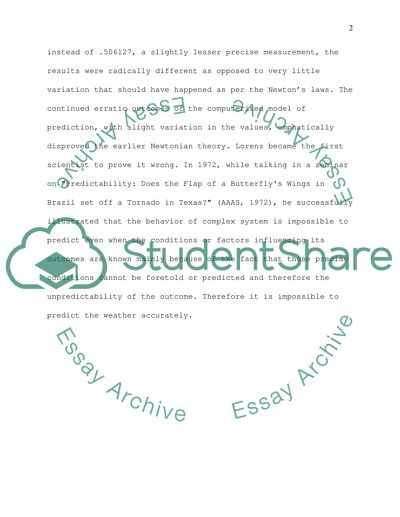Cite this document
(Butterfly Effect or Chaos Theory Essay Example | Topics and Well Written Essays - 1892 words, n.d.)
Butterfly Effect or Chaos Theory Essay Example | Topics and Well Written Essays - 1892 words. Retrieved from https://studentshare.org/religion-and-theology/1544789-describe-the-butterfly-effect-and-evaluate-its-implications-for-theology
Butterfly Effect or Chaos Theory Essay Example | Topics and Well Written Essays - 1892 words. Retrieved from https://studentshare.org/religion-and-theology/1544789-describe-the-butterfly-effect-and-evaluate-its-implications-for-theology
(Butterfly Effect or Chaos Theory Essay Example | Topics and Well Written Essays - 1892 Words)
Butterfly Effect or Chaos Theory Essay Example | Topics and Well Written Essays - 1892 Words. https://studentshare.org/religion-and-theology/1544789-describe-the-butterfly-effect-and-evaluate-its-implications-for-theology.
Butterfly Effect or Chaos Theory Essay Example | Topics and Well Written Essays - 1892 Words. https://studentshare.org/religion-and-theology/1544789-describe-the-butterfly-effect-and-evaluate-its-implications-for-theology.
“Butterfly Effect or Chaos Theory Essay Example | Topics and Well Written Essays - 1892 Words”, n.d. https://studentshare.org/religion-and-theology/1544789-describe-the-butterfly-effect-and-evaluate-its-implications-for-theology.


